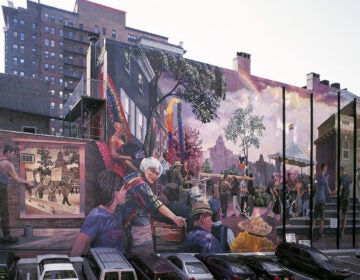Rebuild program emerges from a pandemic slowdown with groundbreaking celebrations at city rec centers
Events at rec centers in Olney, Harrowgate, Mantua, and Port Richmond marked new progress in the $400 million-plus public works program.
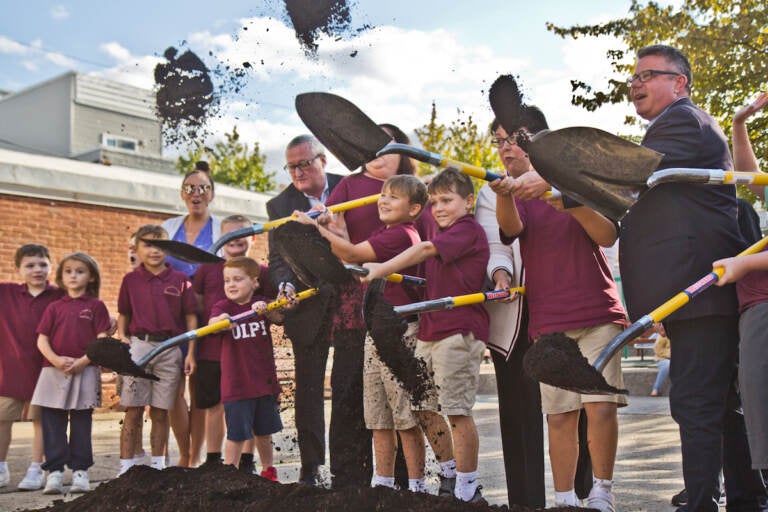
City officials, recreation leaders and students from the Our Lady of Port Richmond school, ceremonially broke ground at Glavin playground on Sept. 30, 2021. (Kimberly Paynter/WHYY)
A gaggle of 11-year-old football players in Olney Eagles jerseys crowded around a swingset at Olney Recreation Center in North Philadelphia, marveling at the poster of a slick architectural rendering that was taped to a pole.
“They’re putting a park right here? Oooooo!” Xavier Hoover exclaimed.
“That’s what our field is going to be looking like?” asked Naomi Eldemire, who goes to the center nearly every day to play basketball and practice football.
“That’s the whole park, bro!” Xavier said.
Anticipation and nostalgia mingled as the players discussed the $16 million reinvention of the well-worn, 13.6-acre recreational facility that has served for generations as a community backyard, play zone, and safe space.
“It’s just good how they redoing everything in the building. We’ll get turf and all that,” Xavier said.
“It’s going to be better,” Naomi said.
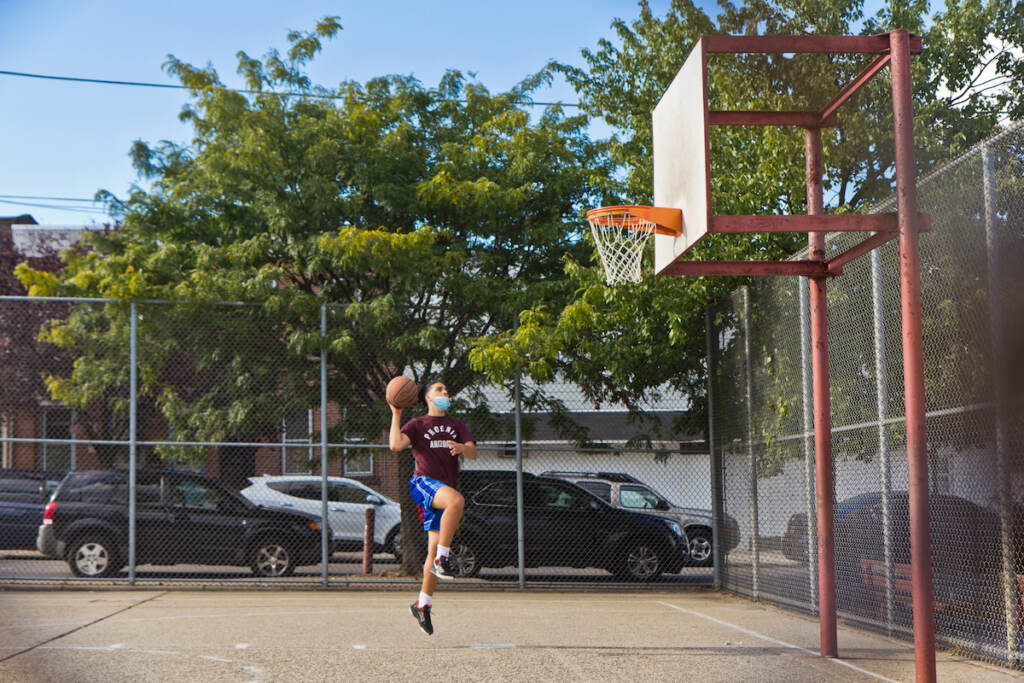
The young players were joined Thursday evening at Olney by dozens of community members and city officials for a ceremonial groundbreaking. It was one of three such events Mayor Jim Kenney attended in rapid succession that day as he sought to draw attention to progress on his $400 million-plus Rebuild public works program, which will fund the work using proceeds from the city’s tax on sugary beverages.
As part of the Rebuild program, the city will demolish and rebuild the center, first constructed in 1957, with meeting rooms, classrooms, a kitchen, and a computer room. Contractors will renovate the gym, put in a new cooling and heating system, update basketball and tennis courts, and install a new track, turf field, playgrounds, pathways, and picnic areas.

Funded by a grant of up to $100 million from the William Penn Foundation and the controversial “soda tax” on sweetened beverages approved in 2016, Rebuild’s launch was delayed until 2018 by court challenges. The initial $500 million budget was subsequently scaled down to about $425 million when the levy brought in less revenue than anticipated.
The program ran into more hurdles last year. In an interview with PlanPhilly, Kenney said pandemic response and the city’s work-from-home mandate diverted the attention of city employees from issuing Rebuild construction bids and vetting contracts, while global supply-chain issues slowed the arrival of materials needed for some renovations.
Rebuild executive director Kira Strong said planning meetings between community members and designers had to be moved online or to outdoor venues, which also hindered progress.
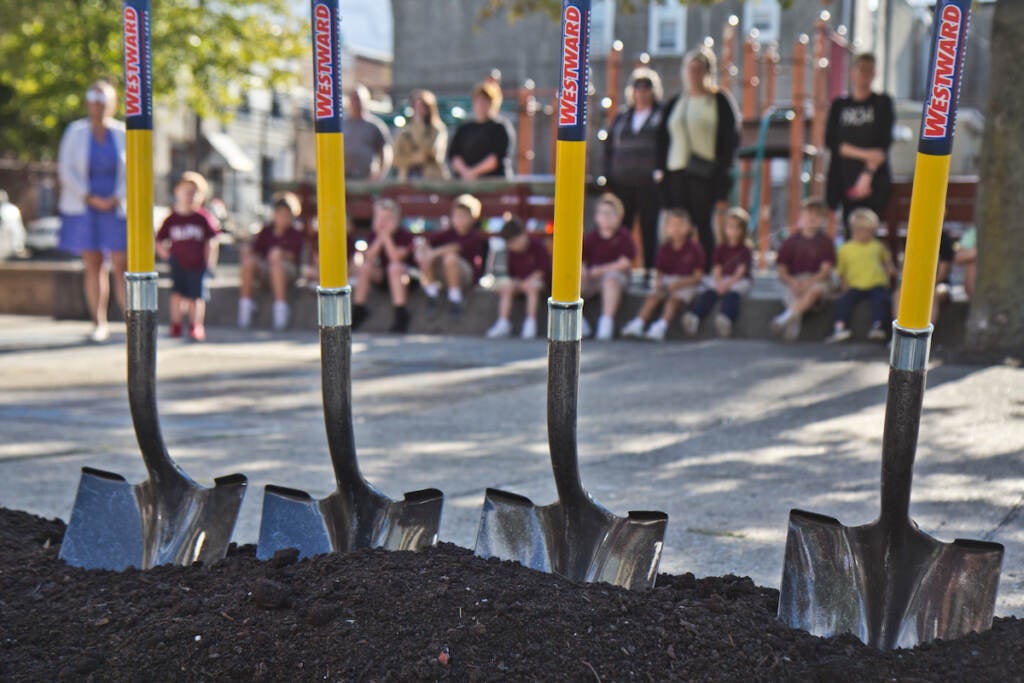
But she said design and construction work have continued nonetheless, with nine sites completed, nine more in construction, and 42 in design and community engagement phases. Another 12 have not yet been started. City Council has approved 72 projects, and $219 million has been spent or committed so far.
“We want the end result in every neighborhood to be the center that people want, not [just] the center that the city gave them, and that takes time. It takes energy, and it takes paying attention to detail, and that’s what we’ve been doing,” Kenney said. “I want people to understand we’re still at it and we’re still moving forward.”
Rebuild is also meeting its diversity goals, awarding 45% of contract dollars to minority-owned businesses and another 23% to woman-owned firms, the officials said. Forty-six percent of the contractor hours worked on the projects have been done by women and people of color, they said.
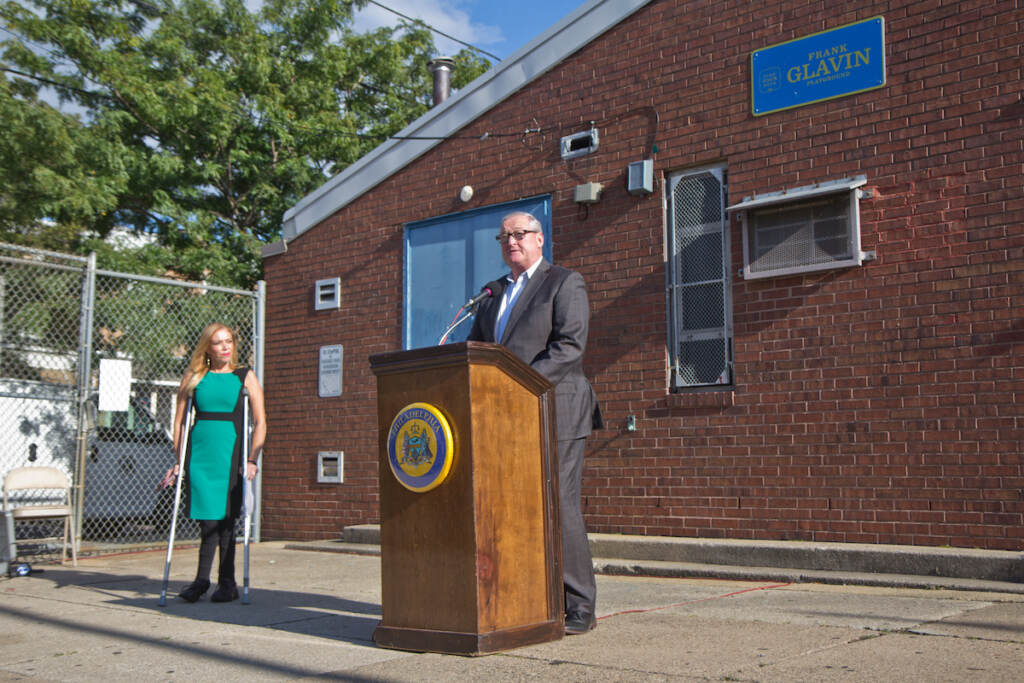
Long-term impact
Earlier in the week, Kenney and Councilmember Jamie Gauthier cut the ribbon at the revamped Miles Mack Playground in Mantua, which saw a $2.8 million update to its recreation center and grounds. On Thursday, Kenney attended groundbreakings for Olney, for a $2.8 million renovation of Heitzman Recreation Center in Harrowgate, and for a $2.4 million project at Glavin Recreation Center in Port Richmond.
At Glavin, Councilmember Bobby Henon praised Kenney for proposing Rebuild when he was running for mayor, calling it his “legacy for years to come.” Standing in front of the site’s main building, with its distinctive, steeply angled roof, Henon emphasized the central place of recreation centers and parks in the fabric of the community.
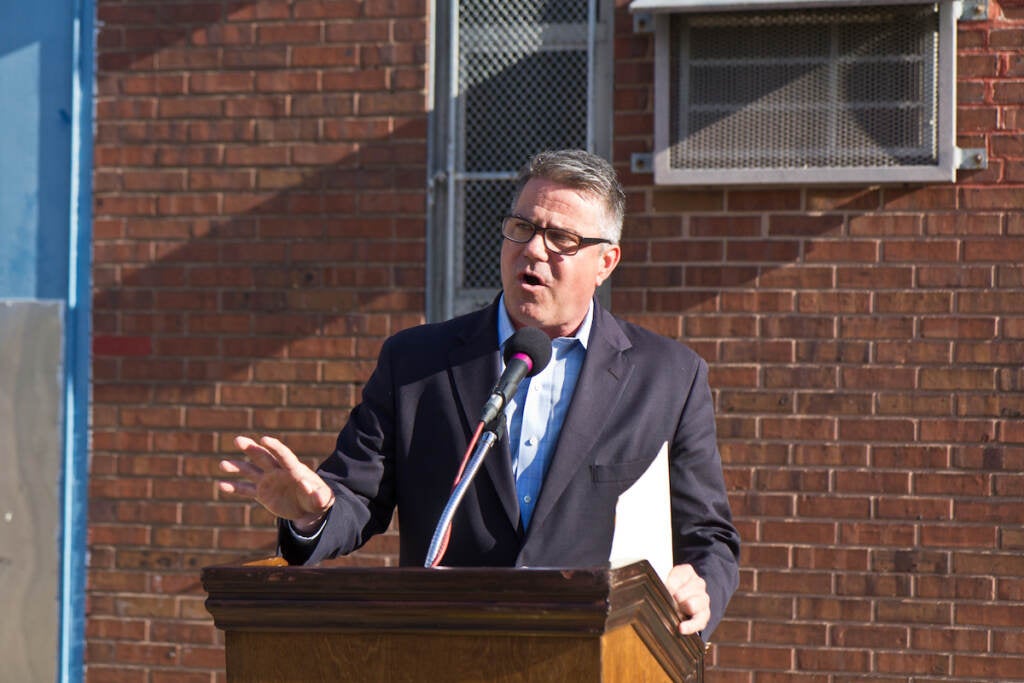
“How exciting it is, to finally have some resources to put into a playground that is extremely highly utilized,” he said. “You have a playground that has so much history and in such a densely populated neighborhood where families chose to stay — families decided to come out and use its open spaces, use its play equipment and rec center and its programs.”
Lacey Dugan, who lives nearby, watched the speeches with her husband while holding her 4-month-old son on her shoulder and watching her 3-year-old wander the worn playground surface.
“He comes here all the time, as much as we can,” she said. “He loves the swings. He would stay on the swings for hours if he could. He runs around, brings his toys.”
As a young girl and then a teen, Dugan said, she went to Glavin “all the time” to shoot hoops or play “squish the lemon” on a big slide that has long since disappeared. She did Girl Scouts, karate lessons, and tumbling in the rec center, and visited the haunted house at Halloween.
“We want to be here for years to come,” she said. “Fixing it up would be great for the kids, so they can experience more of it.”
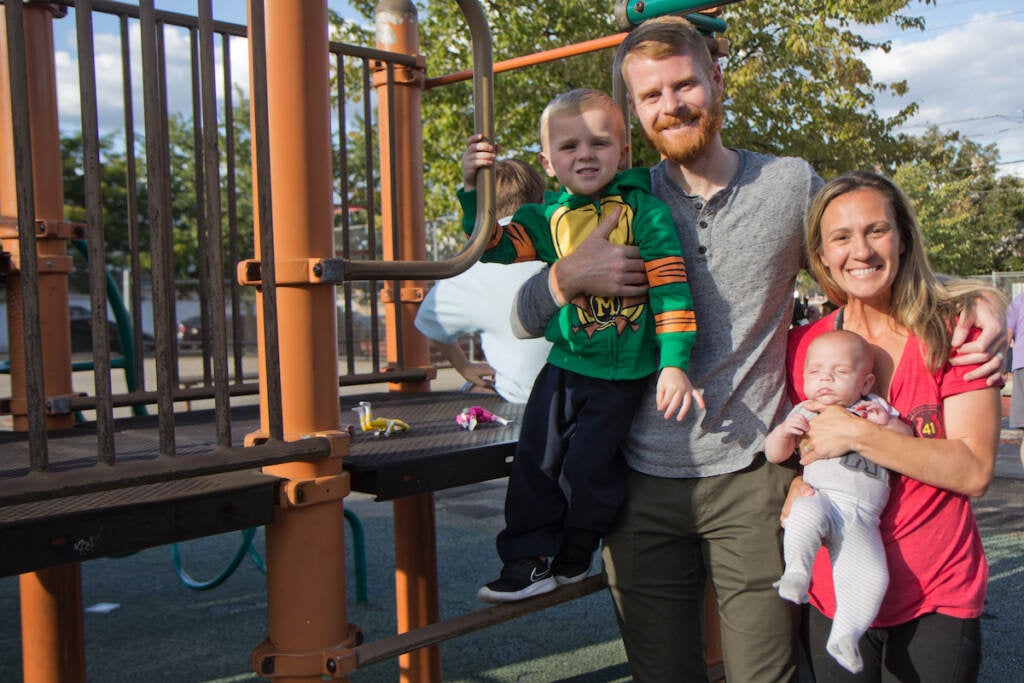
A design led by the Pennsylvania Horticultural Society will bring Glavin new playgrounds, trees, a sprayground, and shaded seating area, along with new heating and cooling systems for the building and wheelchair-accessible restrooms.
Kenney said that others would decide whether Rebuild was his legacy, but added that he did expect the program to continue renovating parks and libraries for years after he leaves office in January 2024. It would be “stupid” for a future mayor to end the soda tax, he said, since it provides an alternate stream of funding for “good things” the city needs.
The mayor noted that the 1.5-cents-per-ounce tax also funds pre-K programs and the community schools program, which brings social services to public school campuses. Critics charge that the tax has led to lost jobs in retail, bottling factories, and trucking, while a recent Rutgers University study concluded that the tax created 800 to 1,350 jobs by funding child care centers and allowing more low-income parents to work.
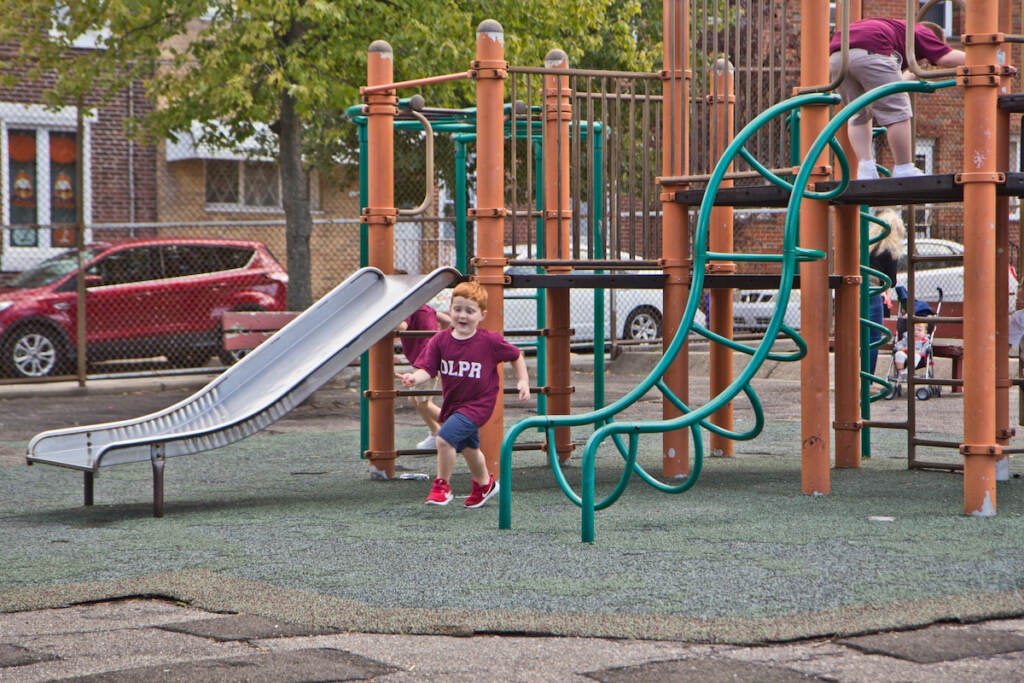
Developing a workforce
For those like Councilmember Cherelle Parker who took political heat for supporting the soda tax, the week’s groundbreakings were occasion for a victory lap. At the Olney event Thursday evening, Park called the site’s coming renovation a “transformational opportunity” for a neighborhood that has “long been one that lacked investment.”
“Olney Eagles, this has been a long time coming,” she told the football players in the crowd. “We travel to the suburbs, and then the suburbs have had to travel here, to our less-than-subpar conditions. Fortunately for us, we will now give this community the quality that it deserves.”
She praised Kenney’s advocacy for the soda tax in the face of strong opposition, describing it as a bold move to fund updates to the city’s aging recreational facilities and comparing it to the trillion-dollar infrastructure bill President Joe Biden is struggling to shepherd through Congress.
Kenney said, in turn, that he was motivated by the need to provide children with safe places to play.
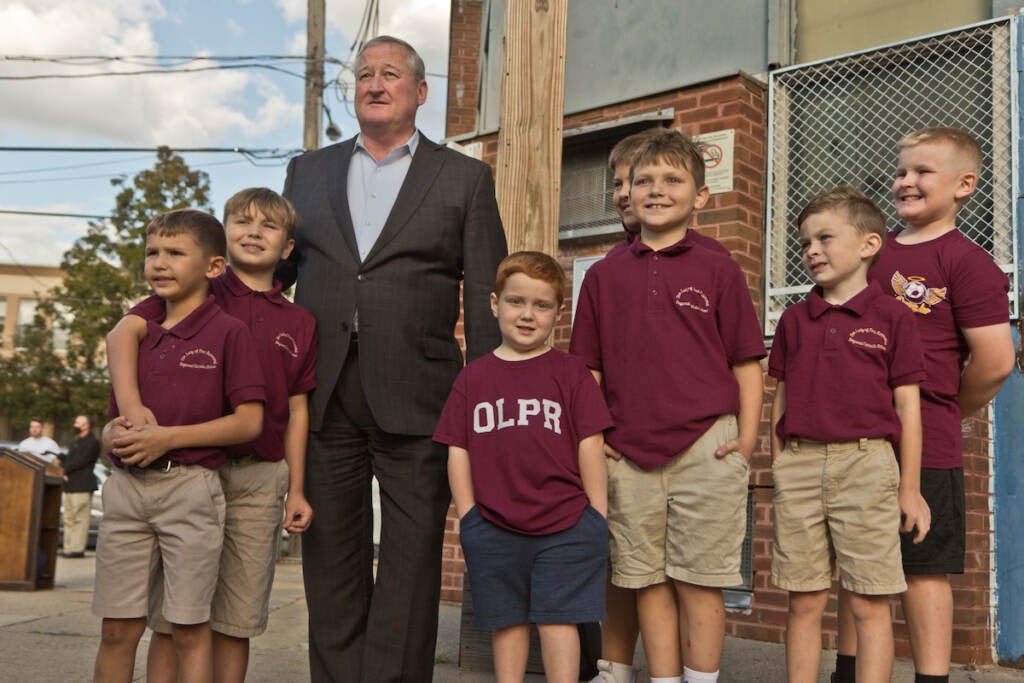
“That’s not much for them to ask for. We have to provide that for them,” he said. “You’re right, it was hard, getting people to understand that a little bit of tax on their soda was not that important, compared to what it’s going to be able to provide.”
Also on hand at the groundbreaking was Jewell Antoine-Johnson, a Camden-based architect whose construction management firm is overseeing the work at Olney. Johnson will serve as a representative of Public Health Management Corp., the nonprofit selected by the city to lead the project.
“For me, it’s full circle, because as a double minority, an African American woman, I feel my duty to often give back in any way that I can,” Antoine-Johnson said. “Whether that’s trying to have minority participation on the projects I usher or giving back in some small way, by getting youth involved in the building industry.”
In addition to its goals of employing minority-led firms and a diverse cohort of laborers, Rebuild also encompasses a broader suite of workforce development programs meant to bring more people of color into construction-related fields.
They include Rebuild Ready, which teaches business management skills and helps participants get Rebuild contracts; two programs to help skilled workers gain membership in the city’s mostly white building trades unions; and the Emerging Vendors Program, which helps firms qualify for certification as minority-owned companies and receive preference for city contracts.
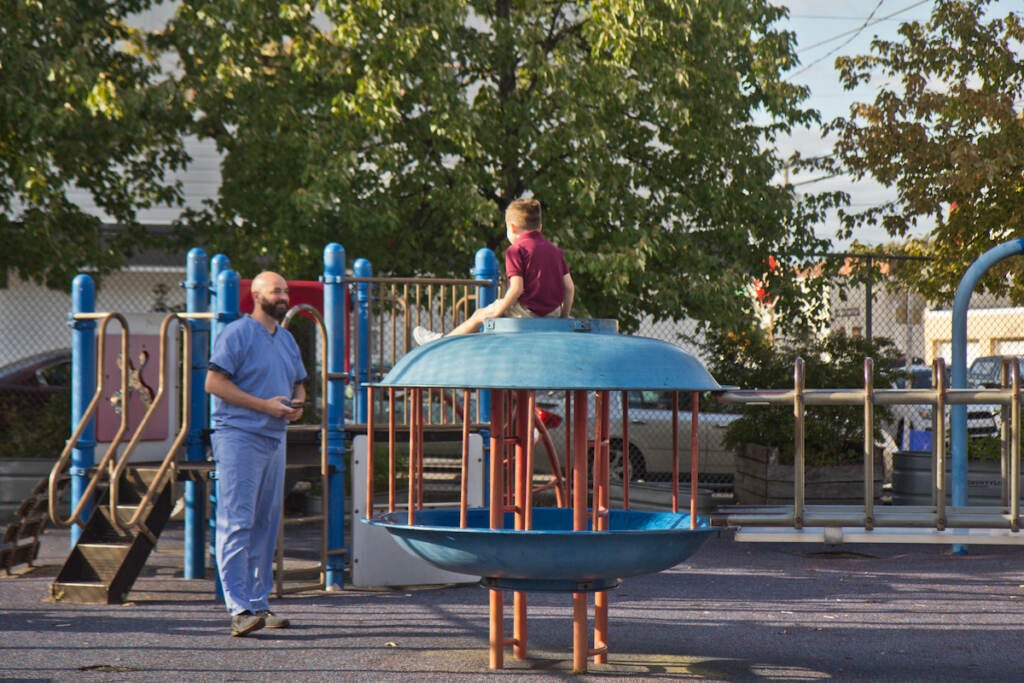
Ninety businesses are enrolled in Rebuild Ready, and 44 have been approved for Emerging Vendors, according to Rebuild officials.
WHYY is your source for fact-based, in-depth journalism and information. As a nonprofit organization, we rely on financial support from readers like you. Please give today.






